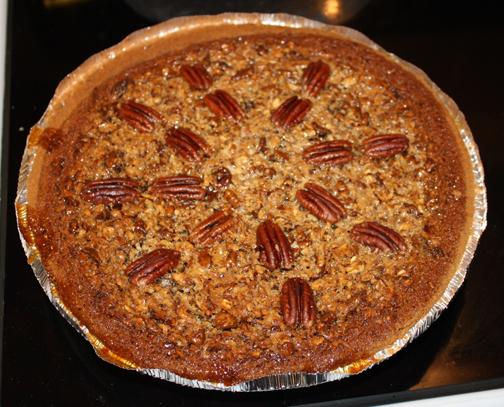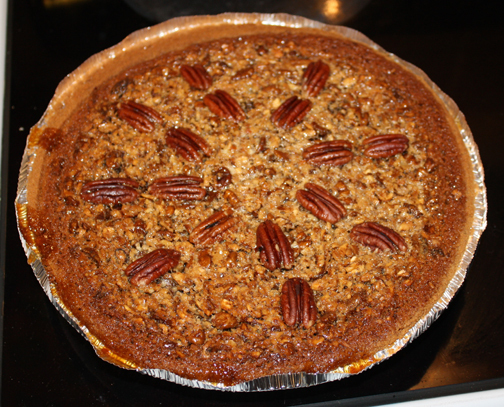
Xplor reconnects kids to nature and helps them find adventure in their own backyard. Free to residents of Missouri.


































Stay in Touch with MDC news, newsletters, events, and manage your subscription

Xplor reconnects kids to nature and helps them find adventure in their own backyard. Free to residents of Missouri.

A monthly publication about conservation in Missouri. Started in 1938, the printed magazine is free to residents of Missouri.


The idea of a hickory nut pie isn't all that far-fetched in these days of organic eating and natural living. However, I wanted to make a hickory nut pie more to connect with the past than to keep up with the latest trends. I wanted to make one like my grandmother used to bake.
Hickory nuts are hard to pick out of the shell and the notion of picking hickory nut meat out for hours is what has held me back. I'm a self-proclaimed busy guy and have little time to waste, even on things I enjoy. Fortunately, Native Americans solved this hickory nut processing problem centuries ago. I had the good fortune to read about it in some primitive skills literature and it bolstered my confidence that I could do this quickly.
You can work up quite an appetite cracking and picking the "goodie" out of the shells. When compared to other native Missouri nuts, hickories yield the least amount of nut meat for the time invested. But Native Americans preferentially harvested and processed a lot of the hardwood fruits. Their secret was water and I used this secret to make the process bearable.
First, I collected every shellbark and shagbark hickory nut I could beat the squirrels to. Both trees are easy to identify with their shaggy unkempt looking bark. They have reasonably large nuts compared to other hickories and possess a pleasant flavor. I avoided bitternut hickories. As their name indicates, the edible nuts are unfortunately bitter. The Missouri Department of Conservation (MDC) has a free publication Missouri's Oaks and Hickories with identification references available online at mdc.mo.gov or at a local MDC nature center.
Second, I poured my harvest in a bucket of water. One third of the nuts sank and the remaining two thirds floated. According to my sources, I needed to discard the floaters. Just to be sure, I cracked open over 25 of the floaters and found every single one was a cull. No edible meat whatsoever. So the float test was a fully accurate way to determine if the nut was good or bad. This left roughly one and a half quarts of raw uncracked hickory nuts.
The third step was the cracking process. My thirteen-year-old son helped with this task. Equipped with two rocks each, we bashed the nuts with deft blows. Hickories are not thin shelled nuts like hazelnuts or pecans. After about 45-minutes, we had the nuts bashed into small pieces. We later realized that they were not quite small enough but it was a learning experience. Some additional cracking set things right.
The final processing step was where the real magic took place. Hickory nuts are the only nut I am aware of that work for this process. I selected a large pot and filled it with water. I was going to use a floating process once again, but this time I wanted floating.
I poured my crushed mixture of nut meat and shells into the pot, stirred the mixture a few times and watched. To my elation the nut meat began to float to the surface. The shells stayed on the bottom and never surfaced. My son and I took turns skimming the nut meat off with a ladle and put the wet nuts in a glass pan so they could dry.
I skimmed and stirred repeatedly, seven or eight times. Then I poured off the water and examined the shells. A few small scraps of nut meat clung to the shells but not enough to warrant further effort. The process removed about ninety percent of the nut meat without picking in just 30 minutes.
All told, I had over two cups of nut meat from that small basket of nuts. I see why the Native Americans used this process, it works exceptionally well and gave me more than enough for a hickory nut pie.
Hickory nut pies are made exactly like pecan pies, so it wasn't hard to find an appropriate recipe by simply substituting hickories for pecans. We used pecan halves as decoration and put the pie in the oven. The whole family enjoyed this delicious pie that was much like the one I used to enjoy with my grandmother. I have room to grow if I want to make a pie as good as grandmother used to, but it was success to be sure. In fact, it was so good, I'm pretty sure I'll have help collecting hickory nuts next fall in anticipation of another pie.
If you'd like to try your hand at making a hickory nut pie, try a pecan pie recipe and just substitute hickory nuts for the pecans. Or, if you'd like to try the same recipe my family enjoyed, here's the one I retrieved from my father:
Hickory Nut Pie
Ingredients
3 eggs
1 cup Karo syrup
¾ cu sugar
2 tbsp melted butter
1tsp vanilla extract
⅛ tsp salt
1 cup chopped hickory nuts
1 pie crust
Directions
In a small bowl, beat eggs just until blended but not frothy. Beat in the corn syrup, sugar, butter, vanilla and salt until blended. Stir in nuts. Pour into pie crust.
Cover edges loosely with foil. Bake at 350° for 25 minutes. Remove foil; bake 10-15 minutes longer or until a knife inserted near the center comes out clean. Garnish with additional nuts if desired. Yield: 6-8 servings.
For help identifying hickory trees or for more wild edible ideas and recipes, go online to mdc.mo.gov.